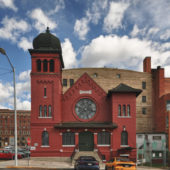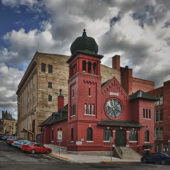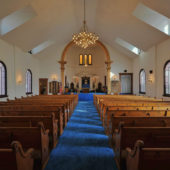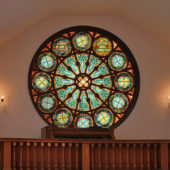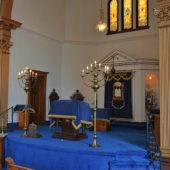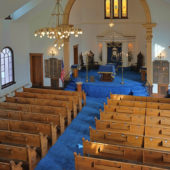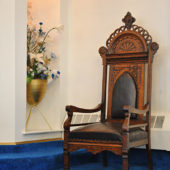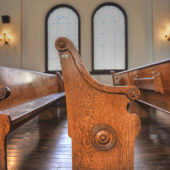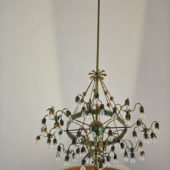When this synagogue was dedicated in 1904, according to the New York Times Butte was “a hard-living city with bars in almost every block”, Butte was as close to urban as the Wild West got, luring fortune-seekers from every corner of Asia and Europe.
Jews settled in Butte, Montana over a century ago, drawn by the business opportunities. Back then Butte was a brick and clapboard city serving rough and bawdy miners carving out Montana’s copper, silver and gold. Mining was booming in Butte a century ago, and retail opportunities, such as supplying the townspeople with food, clothing or furniture, were abundant. In the 1940s there were 1,000 Jewish people in the city and three synagogues, two Orthodox and one Reform. Back then, when the Anaconda Company processed more copper than any other company in the USA, the population of Butte was 100,000. By 2010 it shrank to 32,000. Parallel with the decline of Butte, its aging Jewish population moved on to more cosmopolitan places. Today, only the Reform synagogue remains active in the city.
Butte’s first mayor was Jewish, elected in 1879. His house has been restored, as part of the national landmark district of the city. The Jewish citizenry of Butte became formally organized in 1881 with the formation of the Hebrew Benevolent Society. In 1885 land was granted to B’nai Israel, Butte’s first synagogue, from the Northern Pacific Railroad. Construction began in 1897 and the synagogue was officially dedicated in 1903. The first resident rabbi came in 1904.
The Romanesque/late Victorian red brick building was completed in 1913, and after several additions, a newly remodeled prayer room was dedicated in 1969. The facade boasts a magnificent round stained-glass window above the entrance, and two towers, the tallest topped with a black onion-shaped dome. The spacious prayer room with ivory walls features arched, paned windows upstairs and downstairs on the side walls. The striking round stained glass window is at the back of the prayer room and three arched stained glass windows are situated above the Aron Kodesh at the front of the sanctuary. The Aron Kodesh is classically styled with ivory columns, arches and entablature, trimmed in gold. A royal blue Torah curtain, embroidered in gold and ivory, is drawn across the front. The tivah (reader’s desk) is simply carved of wood and stands in front of the Aron Kodesh on the platform, covered by a royal blue throw. Black twin tablets gilded in Hebrew sit on the floor next to the tivah. Tall brass menorahs flank each side of the tivah. Simply carved wood benches sit on royal blue carpeting. B’nai Israel is listed on the National Register of Historic Places and is the oldest synagogue in Montana. Because the three early synagogues in Butte merged into B’nai Israel, it now boasts five Torah scrolls, affluent even by Eastern standards.
Today, B’nai Israel is the city’s only active synagogue, with less than twenty families in the congregation and an aging membership of approximately 30 people. There are no Jewish young people or of family forming age. Unless something happens to change this demographic the congregation’s days are numbered. The last full-time rabbi served in the 1960s. When a rare special occasional such as a wedding or Bar Mitzvah takes place it is nearly as big an occasion as the St. Patrick’s Day Parade, and the entire city takes notice.
The congregants are planning the future of the synagogue and its ritual items for the time when there is no longer a viable congregation. They have devised a Jewish Community Legacy Project, which assists synagogues so that when the time comes, the buildings are not simply shuttered and abandoned. $600,000 has been donated to the Legacy Project so far, which the community sees as “a godsend,” as it will provide care for the cemetery, which has been a concern for the members.

